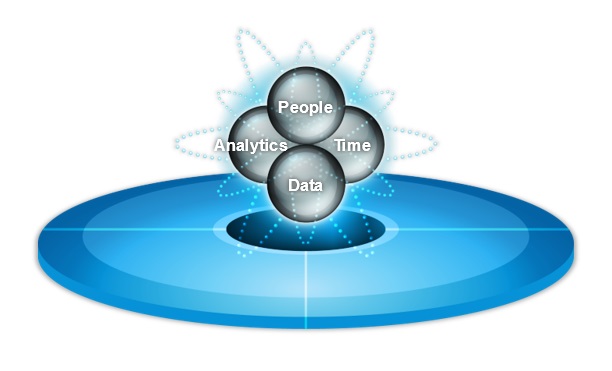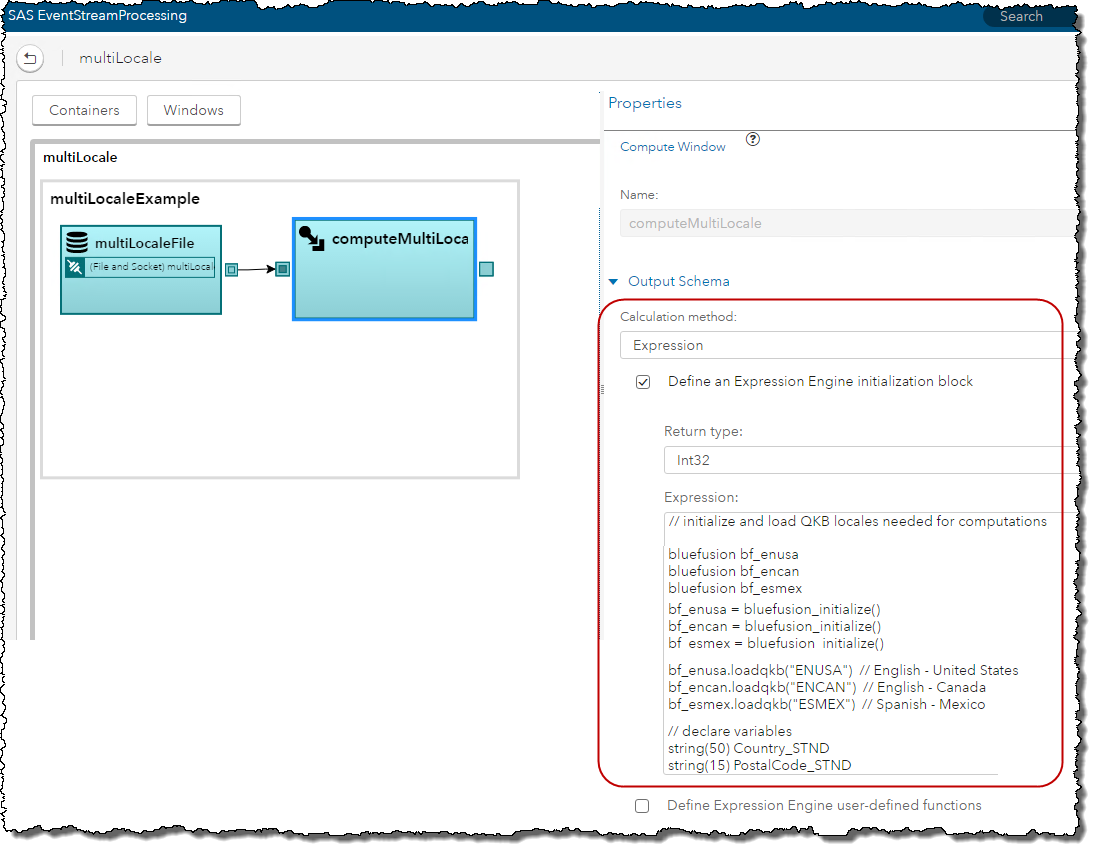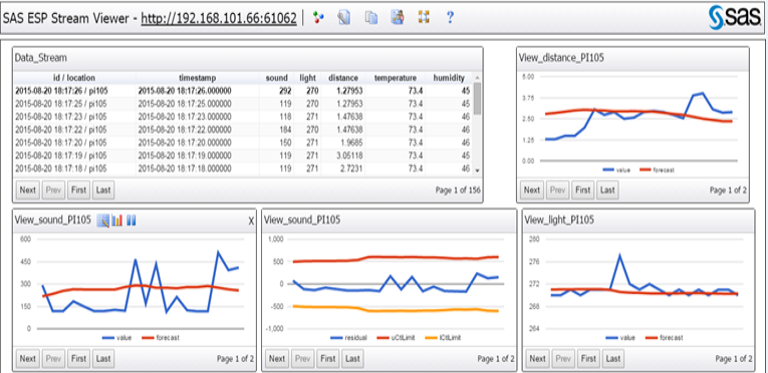Blend, cleanse and prepare data for analytics, reporting or data modernization efforts

.@philsimon says that data-governance professionals will need to be more agile than ever.
Blend, cleanse and prepare data for analytics, reporting or data modernization efforts

.@philsimon says that data-governance professionals will need to be more agile than ever.

Analytics provides better insights into why something happened, or helps provide decision makers with information about what will happen in the future. That allows organizations to act now to improve outcomes instead of reacting to events after they happen. But it takes more than analytics alone. Achieving this level of

In recent healthcare blogs I’ve looked at the need to drive more value from the UK’s National Health Service (NHS) and how this relies upon the ability to make decisions based on robust, data-driven insights. But what value will these decisions have if they're not founded on a mature data

Data governance plays an integral role in many enterprise information initiatives, such as data quality, master data management and analytics. It requires coordinating a complex combination of factors, including executive sponsorship, funding, decision rights, arbitration of conflicting priorities, policy definition, policy implementation, data stewardship and change management. With so much overhead involved in

In a previous blog post, I demonstrated combining the power of SAS Event Stream Processing (ESP) and the SAS Quality Knowledge Base (QKB), a key component of our SAS Data Quality offerings. In this post, I will expand on the topic and show how you can work with data from

Hadoop may have been the buzzword for the last few years, but streaming seems to be what everyone is talking about these days. Hadoop deals primarily with big data in stationary and batch-based analytics. But modern streaming technologies are aimed at the opposite spectrum, dealing with data in motion and

In Part 1 of this series, we defined data governance as a framework – something an organization can implement in small pieces. Data management encompasses the disciplines included in the data governance framework. They include the following: Data quality and data profiling. Metadata (business, technical and operational). Data security. Data movement within the enterprise.

.@philsmion says that even the "best governed" organization today isn't safe from inquiring minds.

Data integration teams often find themselves in the middle of discussions where the quality of their data outputs are called into question. Without proper governance procedures in place, though, it's hard to address these accusations in a reasonable way. Here's why.

GDPR, or the European General Data Protection Regulation, will be upon us in just 15 months’ time. Companies not just in Europe but around the world are preparing for it, because it affects any personal data held about any European customer, no matter where a company is based. But how

Data governance must encompass management of the full life cycle of a data policy – its definition, approval, implementation and the means of ensuring its observance - David Loshin, Data Policies and Data Governance I was checking out my Google stats on Data Quality Pro recently and observed that "How

Data governance has been the topic of many of the recent posts here on the Data Roundtable. And rightfully so, since data governance plays such an integral role in the success of many enterprise information initiatives – such as data quality, master data management and analytics. These posts can help you prepare for discussing

Machine learning is taking a significant role in many big data initiatives today. Large retailers and consumer packaged goods (CPG) companies are using machine learning combined with predictive analytics to help them enhance consumer engagement and create more accurate demand forecasts as they expand into new sales channels like the

Real world data collected in a functioning health care setting instead of a controlled clinical environment can provide opportunities for new and deeper insights across life science and health care organizations. However, managing, analyzing and extracting actionable information from the varied available sources can present unique challenges. The sheer size of these

Lately, the definitions of data governance and data management look very much alike. In this two-part series, we'll define data governance and data management. And we'll see that there's a big difference in the two.

.@philsimon asks, Rather than trying to tackle a new form of governance, wouldn't your organization do better to shore up its existing data-governance practices?

Start with the end in mind -- wise words that apply to everything, and in the world of big data it means we have to change the way we look at managing the data we have. There was a time when we managed data quality, and the main goal was

We've witnessed a significant rise in data governance adoption in recent years. Careers, technology, education, frameworks, practitioners – there's growth in all aspects of the discipline. Regulatory compliance across many sectors is a typical driver for data governance. But I also believe one of the main reasons is the realisation by

Just in time for the Strata + Hadoop World Conference, SAS became the first software vendor to achieve ODPi Interoperability with our Base SAS® and SAS/ACCESS® Interface to Hadoop products. Now, that's a lot to digest – so let me back up a second and give some background as to what this

What if you could predict with near-perfect accuracy what you’re going to sell and when your customer is going to buy? Right supply, right time is the goal German manufacturers have set themselves, without reducing the configuration options customers expect. Having almost completed stage 1 of their plan – changing

In my last post, we explored the operational facet of data governance and data stewardship. We focused on the challenges of providing a scalable way to assess incoming data sources, identify data quality rules and define enforceable data quality policies. As the number of acquired data sources increases, it becomes

As I've previously written, data analytics historically analyzed data after it stopped moving and was stored, often in a data warehouse. But in the era of big data, data needs to be continuously analyzed while it’s still in motion – that is, while it’s streaming. This allows for capturing the real-time value of data

.@philsimon on the need to adopt agile methodologies for data prep and analytics.

In Part 1 of this two-part series, I defined data preparation and data wrangling, then raised some questions about requirements gathering in a governed environment (i.e., ODS and/or data warehouse). Now – all of us very-managed people are looking at the horizon, and we see the data lake. How do

Data governance can encompass a wide spectrum of practices, many of which are focused on the development, documentation, approval and deployment of policies associated with data management and utilization. I distinguish the facet of “operational” data governance from the fully encompassed practice to specifically focus on the operational tasks for

Lately I've been binge-watching a lot of police procedural television shows. The standard format for almost every episode is the same. It starts with the commission or discovery of a crime, followed by forensic investigation of the crime scene, analysis of the collected evidence, and interviews or interrogations with potential suspects. It ends

.@philsimon chimes in on new data-gathering methods and what they mean for analytics.

I'm a very fortunate woman. I have the privilege of working with some of the brightest people in the industry. But when it comes to data, everyone takes sides. Do you “govern” the use of all data, or do you let the analysts do what they want with the data to

Since the idea of an “IoT analytical lifecycle,” may be understood in many different ways, let’s start with a definition. Performing analytics at the data center and the cloud is well established practice, and is still quite relevant. With growing numbers of connected devices and availability of computing capabilities at
.@philsimon on the downside of the Band-Aid approach.